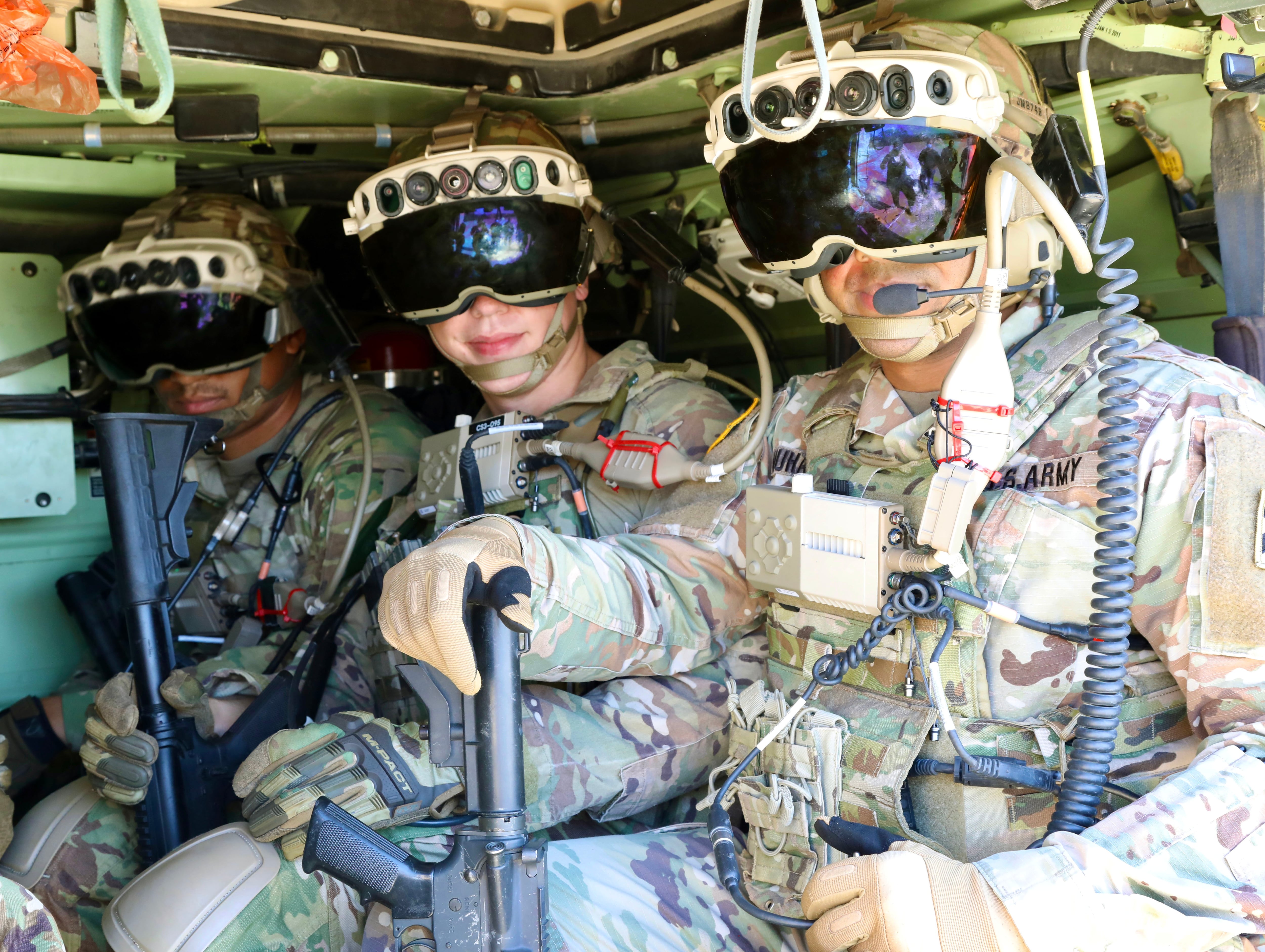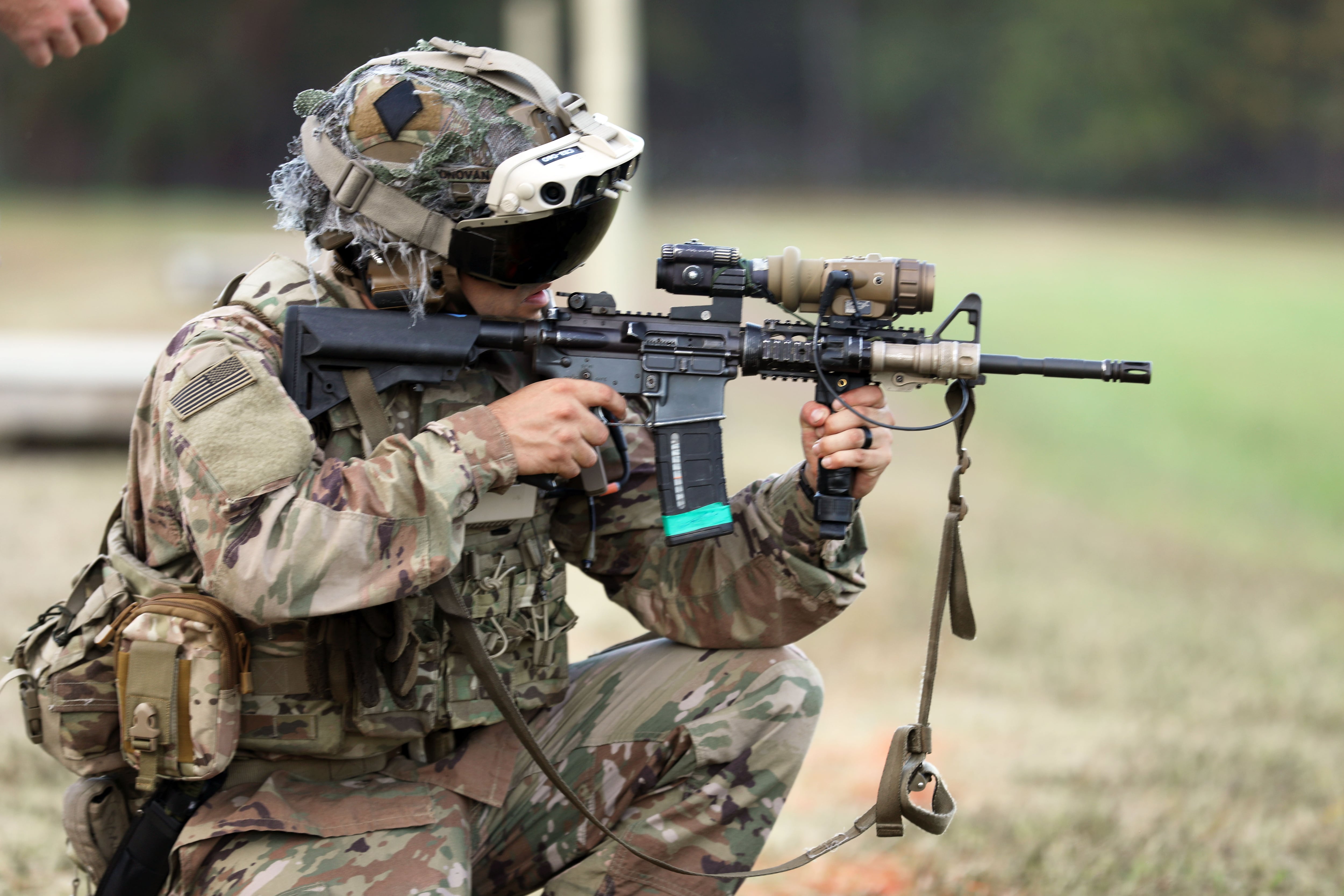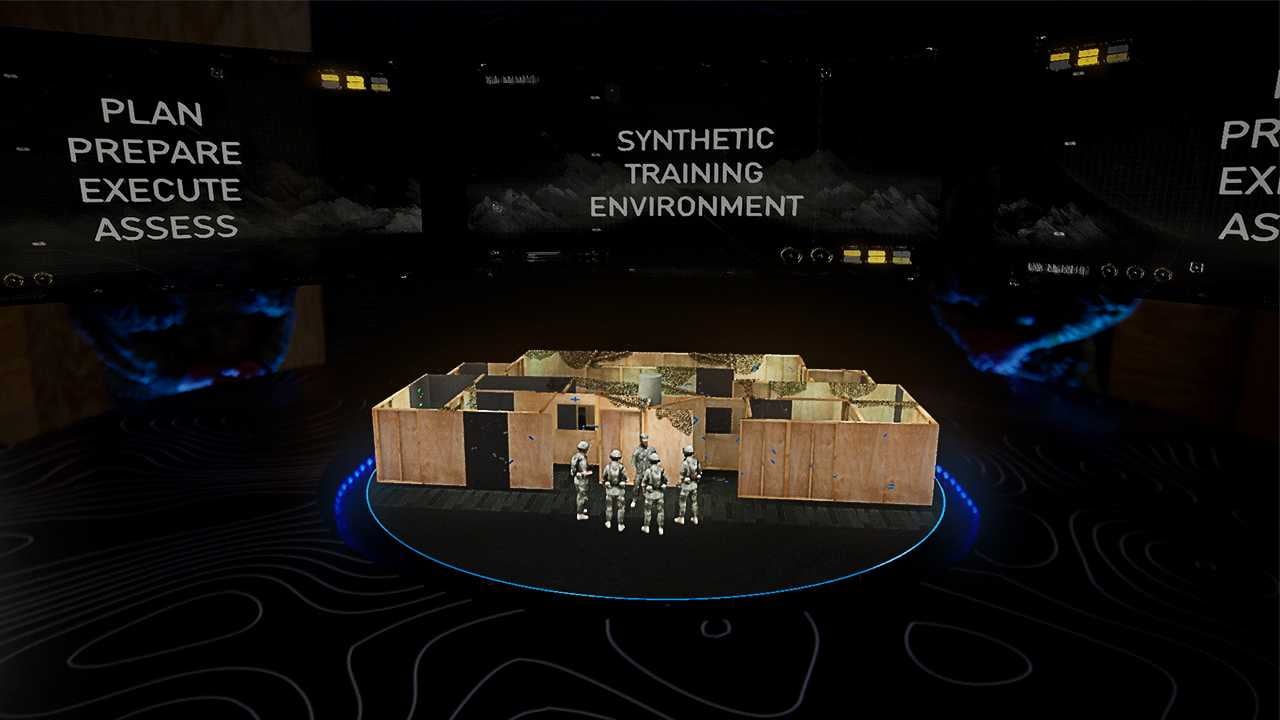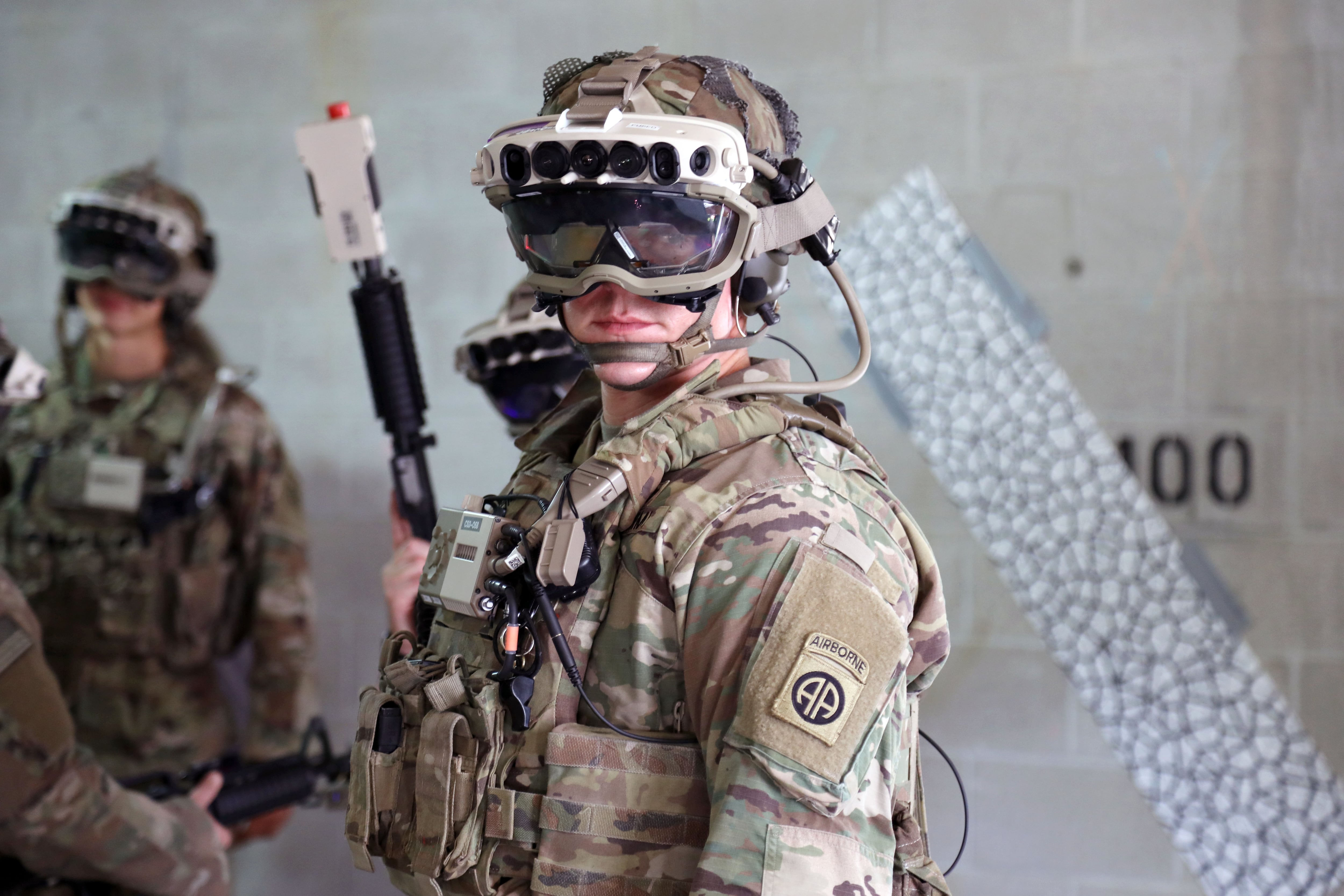The Pentagon Inspector General chided the Army over its augmented reality goggle program in a new report Friday, saying at one point in the document that the service risked “wasting up to $21.88 billion in taxpayer funds to field a system that Soldiers may not want to use or use as intended.”
The report focuses primarily on the fact that neither the Army nor Program Executive Office-Soldier defined “minimum user acceptance levels to determine whether IVAS would meet user needs.”
That’s a jargony way of saying that, despite dozens of “soldier touch points,” the Army didn’t actually lay out how it would measure whether the goggle met soldiers’ standards or if it would be used effectively when fielded, according to the audit.
PEO-Soldier spokesman David Patterson told Army Times that the Army defined prototype metrics for IVAS requirements.
Army officials “recognized the importance of Soldier Acceptance as a factor, but not the only factor in developing the capability and determining the path forward,” Patterson said in an email response.
The soldier-centered design was heavily influenced early prototypes, he wrote.
Much of the report, including feedback from soldiers, was redacted in the officially released version, which was posted online Friday.

Developers have relied on soldier surveys to gather feedback and input on later IVAS designs. But “it is difficult to determine specific cause and effect as there are many variables that influence soldier acceptance,” Patterson wrote.
Those variables include survey sample size, continuity, system performance, and even soldier morale based on poor weather versus bad weather, he added.
“It is important to also note, that IVAS represents a disruptive technology in the night vision space and the adoption of new technology is often slow,” Patterson wrote.
The IVAS program began as a named program in 2018. It started with a partnership with Microsoft, using the company’s HoloLens platform as the base for an augmented reality goggle for field use.
Over the next two years, developers flowed various technology into the device. In early demonstrations for media, the device allowed for target acquisition tied to an individual weapon, thermal day sight operation, night vision, navigation and biofeedback for the user.
The system would also allow for cloud computing access on the battlefield and connect to larger command and control systems for individual soldier monitoring by higher echelons of command.
Assistant Secretary of the Army for Acquisition, Logistics and Technology Douglas R. Bush pushed back on some of the IG’s findings, according to the audit.

The IG recommended that Bush develop an “Army-wide policy” that requires program officials to define user acceptance measurements for testing and evaluation.
No such policy existed for IVAS or other such programs, according to the audit.
Bush argued that a policy governing the measurement of user acceptance already existed in Army regulations. The IG pushed back, saying the application of the policy Bush referenced with IVAS was not clear and needed to be refined.
More specifically, the IG also recommended that PEO-Soldier “define clear measures of user acceptance levels to meet user needs before Soldier Touch Point-5 testing of IVAS.”

Soldier touch points allow different troops to try out equipment prototypes and give feedback to developers on changes they might make and how they would use the gear in their jobs.
Patterson confirmed that Soldier Touch Point 5 has already been conducted. That event had soldiers using equipment in an operational environment.
Patterson said that releasing equipment performance results would “violate our security classification guidance.” But he noted that the system’s performance improved from the previous soldier touch point. And there are no further touchpoints currently scheduled.
The program was on schedule to have the IVAS through development and begin fielding by this spring. However, as early as summer 2021, limitations with the device’s field-of-view, which involved image warping for the wearer, caused developers to pause the timeline so they could find a fix.
Maj. Gen. Anthony Potts, PEO-Soldier commander, told Army Times that the program was “pushing the boundaries” of existing technology. Developers sought to more than double the field-of-view for the IVAS compared to existing night vision goggles.
Some devices also suffered from moisture control problems, Potts said.
Current night vision devices offer about a 40-degree field-of-view. IVAS sought an 80-degree view. But Potts told Army Times the final version of the device will still have a 70-degree field-of-view, far wider than that of existing technology.
The needed fixes were not fatal to the program, only requiring a tech pause, according to Potts. The team has pushed forward with other parts of the program, including an evaluation in January.
Program officials, as of early this year, still expected the IVAS to field before the end of fiscal year 2022, or by October.
It’s unclear what, if any, further delays might now be needed as PEO-Soldier and the Army define how to best measure user needs.
Todd South has written about crime, courts, government and the military for multiple publications since 2004 and was named a 2014 Pulitzer finalist for a co-written project on witness intimidation. Todd is a Marine veteran of the Iraq War.




